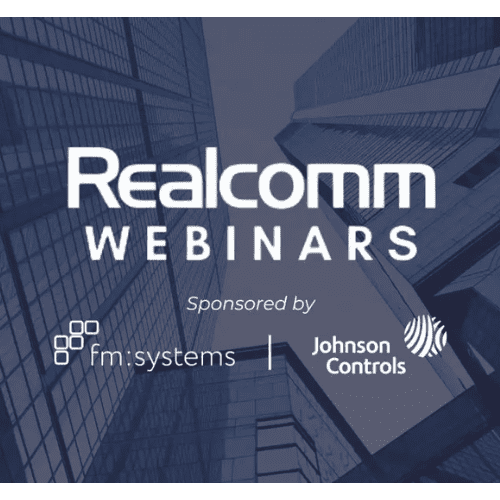AI Unleashed: Navigating the Digital Storm and Riding the Digital Fast Lane
About the Recording
Explore how AI has been unleashed on the commercial and corporate real estate (CRE) industry. Our panel will sort through several categories of AI-based solutions and dispel common misconceptions surrounding AI in this industry. This webinar will identify key consideration strategies and roadmaps for AI-related tools tailored specifically for CRE applications.
Uncover effective strategies for data source development and gain insights from early testing results. Immerse yourself in real-world scenarios through case studies featuring actual deployments in the back office, built environment and business process automation. Witness live demonstrations showcasing the power of AI in reshaping the landscape of CRE.

Speakers


Watch the Recording
Episode Transcription
Jim Young 0:00
How are you, sir? Good to see you.
Rob Norin 0:05
Well, Jim, thanks for having me.
Jim Young 0:08
Yeah. So you listen to those guys talk? I mean, does it make your head spin a little bit?
Rob Norin 0:14
No, in fact, it gets my gears turning. it’s exciting stuff. Yeah, it’s a conversation.
Jim Young 0:22
Yeah, it certainly isn’t. Like I said earlier, I’ve been through a number of paradigm shifts in technology, and they have a certain energy, a certain cadence, you know, certain speed. I’ve not felt this one before. And so I’m excited to hear what you have to say, wanting to get us through your, your presentation, and I’ll come back when you’re done. We’ll have a couple of questions.
Rob Norin 0:41
Absolutely. Thanks, Jim. All right. So the AI revolution and make no mistake, and I think we all touched on, this is a revolution, it is moving fast. And it’s something you know, Jim touched on moving faster than we’ve ever seen before. So, you know, in short, AI is the machine’s ability to perform, you know, functions that we would associate with human minds, how their relates to the workplace.
So, you know, the traditional buildings that were used to, you know, I don’t want to call them it’s not dumb, but it didn’t have a lot of technology, right, include a, you might have a smart, you know, motion sensor, light switch, something like that, but that was about the extent of it, then we get to connected buildings, right, where we can actually start to control virtually different different aspects of our buildings, for instance, HVAC, or security, things like that, where we don’t have necessarily people having to be right there in front of the equipment.
But we’re able to control that through through a digital platform, and move on to the smart building, I think this is where a lot of people are starting to get into now, which is, you know, being able to control most aspects of the building’s infrastructure. And then probably in the future, and I haven’t seen many that have really gone this far yet. But this is the the autonomous building, where it is truly driven by AI, right. So every aspect, occupants experience, building systems, and everything, everything involved.
So unlocking the performance of your building, this is where FM:Systems is really focusing one is on the energy efficiency and sustainability. Obviously, the goal to to net zero is important. Having more sustainable, which leads to more cost savings is is really what people are focusing on, I would say, you know, equal to that is the well being and in productivity of our employees or occupants or visitors, being able to retain talent, being able to have the best work environment, right, the best environment period for people to be in that that draws people back in to the to the workplace where we’ve been, for many years, fairly comfortable, right in our home offices, we get used to it, but now we’re really driving to make sure we have the best space possible. And that’s been done through in many ways AI. And then one interesting one that we’ll focus on here in a minute, is the operational efficiency and equipment performance. Right. So having AI driven controls that can can adjust temperature and lighting and things like that. And then of course, safety, security and compliance. This is very, very important. But making sure that, you know, we have the proper amount of technology and AI driving that as well.
So core principles, and I think this is important for autonomous building. So making sure you have the right platform, the right applications, of course, making sure that we’re augmenting controls without having to replace them. And this is what a lot of people I hear are dealing with, right? Build versus Retrofit is, is in everybody’s mind, right? And it can be achieved in an over building to really make it a smart and AI driven building or space. Making sure you’re delivering capabilities with customer priorities right, so not trying to boil the ocean.
You know, the setting guardrails. So we’re not compromising the benefits, but we’re not letting things run wild. I think David had said early on, you know, this is imperfect AI isn’t perfect, generative AI gets better with time, right. And that’s why we need to make sure we always keep humans in the loop. We don’t want the Terminator running loose in our buildings and controlling every single aspect, there’s always going to be a level of human involvement. And then I think probably most important on this slide is is to collect feedback, and make sure that we’re tuning the AI to be as at its best.
So one very, very simple use case, Buddy is relevant to just about any building out there, being able to predict energy use and band with consumption threats, thresholds, and alerts. So simply put, you know, hot and cold calls have been around for as long as we can control a heating and air conditioning or heating. Even prior to that, you know, so hey, I like my office very cold. When I book a room in, in my, in my workspace, I like that to be set to my preference when I come in. But that’s a that’s a probably a simpler answer than, hey, if we know that at certain times, we have a lot of employees or visitors, whoever may be in the space, let’s predict that based on the information, the data we’re gathering, and adjust as we need to help but with those energy savings, and and experience, how we do that through a variety ways. So we do offer an analytics platform that ties into many different data sources. And that’s what is going to help drive decisions in AI. Thank you.
Jim Young 7:07
So Robert, obviously FM:Systems has been around for a while, good company, a lot of experience pretty mature system and architecture. At what point I always like to context is meaningful. For me, it helps me understand what was the date and time your organization decided to start paying attention to this thing called AI?
Rob Norin 7:33
You know, I think it’s been, it’s hard to put a date on it, because I think somebody else had actually said it, it’s it’s been an evolution, right. So the second we saw the opportunity to control or connect building systems to, to occupancy information, which is something we specialize in have for 40 years, we started to see the the opportunity to to implement AI. Now, just recently, we’ve started to incorporate it into our analytics. And it may have been a little bit behind the curve. But that was intentional. And we wanted to be very, very thoughtful and responsible, but how we’re providing the information driven by AI. So I would say, you know, over the past five years, we’ve started to see a tick up, but really in the past two, have we started to truly incorporate it.
Jim Young 8:30
So did it require a total rethink of your architecture? Could you bolt AI on to it was was that a complex process?
Rob Norin 8:38
It’s always complex process, right? When we’re dealing with AI, in many ways, it was not a total rewrite. And in fact, it fit very, very well into a product release called FMS:Insights I just highlighted on the last page. So that was being developed as kind of this this revolution was occurring. So it was maybe some luck, maybe some very smart people that, that put that in place.
Jim Young 9:05
And obviously with you know, giving that kind of control, you know, to have a building to a concept like AI a lot of guardrails, I mean, you must have had a lot of late nights trying to figure out okay, Where can this thing go wrong?
Rob Norin 9:20
Absolutely. In fact, I’ve got some of our product people here who are talking through that right now. There are endless scenarios where this cannot work. So, as I mentioned, being very, very thoughtful and very responsible about how we’re rolling the sound. You know, when you’re talking about controlling buildings in some critical areas, such as healthcare, right, or any any public space, you’ve got to be very, very careful. So yes, we have all of our folks thinking about that and talking about and making sure we’re circulating information and ideas before we roll anything out.
Jim Young 9:59
Awesome. Great job great great points is we nice we have the enterprise conversation with AP earlier now you’re on the smart building side bringing up some really important issues so I appreciate your participation and we’ll have you back at the end when we bring everybody together.
Rob Norin 10:13
Thanks Jim.

